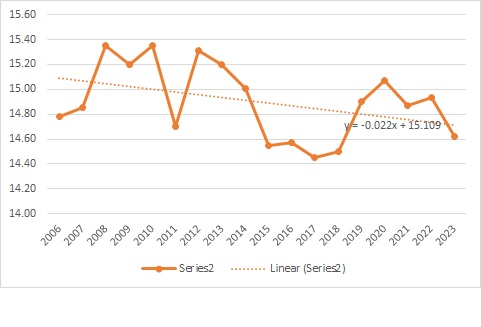Any proposal to extend the parliamentary term in New Zealand from three to four years must be vigorously opposed. Fortunately such a change is going to require a referendum. So, we must steady ourselves to resist the blandishments of self-interested politicians, and vote this terrible proposal down.
Members of parliament are there to represent us. They make a decent show of doing this only when they need our votes. Anytime a member of parliament talks bout showing leadership, you should hear them stating out loud that they are proposing to implement their own views rather than representing you. We can understand their desire for greater job security. However, they are generously rewarded through salary, expenses and pension. That package is already attractive enough to attract a very large number of applicants for a job as a member of parliament. And in this you should not just count the number of candidates at elections, but also the candidates to be candidates in the party selection processes.
We have a uni-cameral parliament in New Zealand. There is just the one chamber and once a new government has arranged to be able to have a majority in that house, 61 votes (in a parliament with no overhang), they can do as they please. The ACT policy of handing chair roles on select committees to the opposition is still allowing politicians to hold politicians to account – they would be marking their own homework. This failing is made all the more serious by the casual use of procedures to introduce new laws “under urgency”, where a new stature can be introduced after breakfast and be law by teatime, completely avoiding any scrutiny by select committee.
To realise the extent to which a government can go rogue you only have to think back to the last parliament. The Labour government began implementing He Puapua – the wholesale Maoriastion of New Zealand, that would turn us into a racist ethno-state. Remember the theft of local authority water assets and their transfer to entities where iwi had 50% share and a veto? Remember the creation of a Maori Health Authority? These policies had not been part of the Labour Party manifesto at the previous election. Consider the damage they managed to do in three years, and how much worse that damage would have been if they had had four years?
In practice New Zealand does not currently have three year terms. We have six year terms, with a review after three years. There has been a single one-term government since the second World War (Walter Nash 1957-1960). In truth, the current system is working rather well. As part of the current coalition agreement ACT required the introduction a Regulatory Standards Bill, which requires politicians and officials to ask , “What problem are we trying to solve?” This government should apply this thinking to any proposal to extend the parliamentary term from three to four years
Indeed, rather than extending the parliamentary term, we should be considering ways to hold members of parliament to account more regularly. Parliamentary elections must always use hand written ballots and they are inevitably expensive to run. However electronic voting may have a role in recall decisions. One can imaging using electronic voting to hold a referendum each year as to whether a general election should be held immediately.







